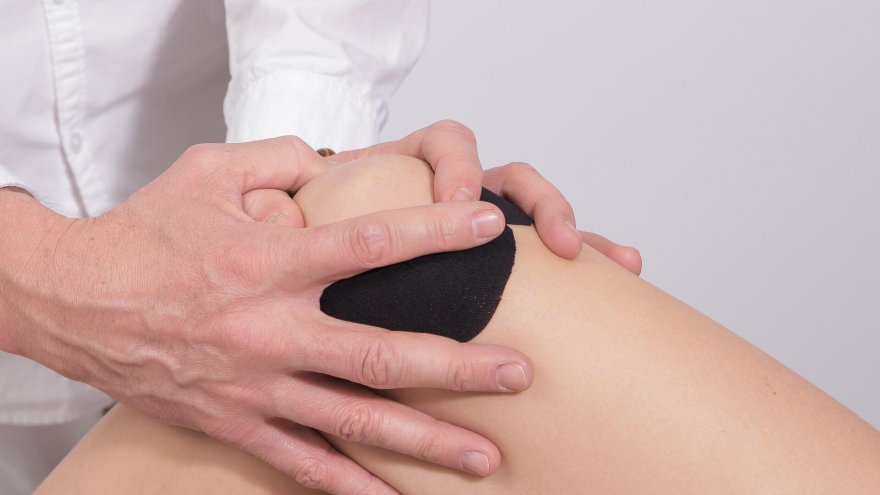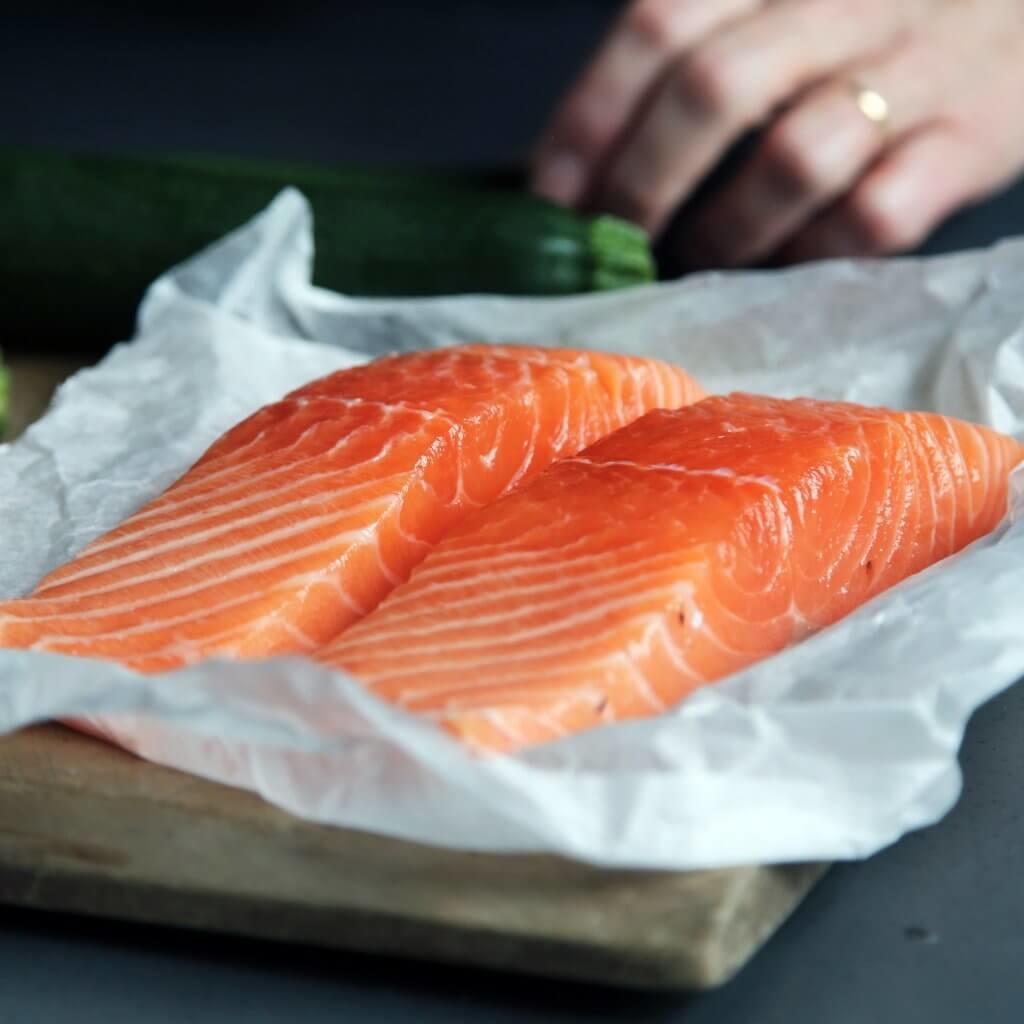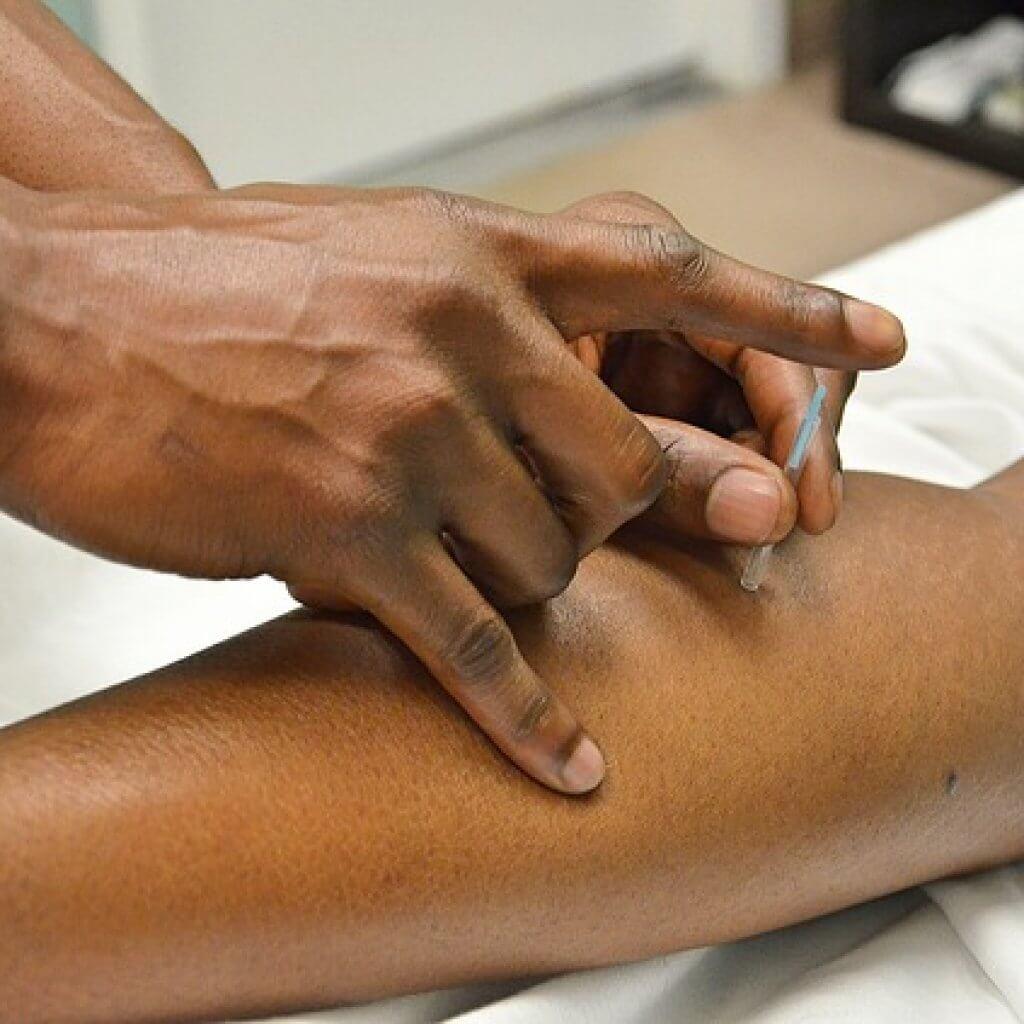Holistic Solutions For Managing Knee Pain

Runner’s knee, known as patellofemoral pain syndrome, is one of the most common injuries afflicting runners. Though it’s tempting to swallow a couple of ibuprofen or aspirin (known as NSAIDs) and just power through runner’s knee, overuse of pain medications can have adverse effects on our bodies including increased risk of cardiac arrest and damage to the liver and stomach amongst others. Plus, while they may make it easier to get through a workout or a work day, they only treat the symptoms and not the root cause of the pain.
But, there’s good news! There are plenty of holistic, natural, and homeopathic solutions for dealing with knee pain that can both alleviate symptoms and also help to treat the causes of knee pain as well. Here we’ve broken down our suggestions into three main categories: preventative measures, dietary changes, and natural healing practices.
Preventative Measures
Practice good form. A 2015 review of ten studies in the Journal of Orthopaedic & Sports Physical Therapy found significant evidence that retraining a runner’s gait can help to reduce the chances of knee injury and positively alter risky lower body movements that can cause knee pain. Two commonly suggested adjustments include avoiding heel striking and running with your torso slightly forward.

Wear proper footwear. Great shoes are crucial to keeping you pain and injury free. Most experts suggest replacing your running shoes every 300 to 500 miles or as soon as you begin to experience new, repetitive pains. It’s also important to find shoes that are tailored to your unique stride and foot structure, as well as those constructed to accommodate your knee and other common injuries.
Strengthen your hip and leg muscles. Our hip and leg muscles work synergistically to help us run, so if one body part is weak, you will overexert the rest to compensate. Doing exercises to strengthen and loosen up the muscles around the knee, particularly the quadriceps, can reduce pressure and impact on the knees. Squats are a great place to start!
Diet
Natural anti-inflammatories. There are plenty of foods, herbs, and spices that can help us to alleviate pain and swelling particularly in joints like the knees. Some of the most common ones include:
- Turmeric. Often found as a ground yellow spice or as whole root, turmeric has long been used in Ayurvedic and Chinese medicine to alleviate joint pain and inflammation. A 2016 review of multiple clinical trials showed promising evidence that turmeric is at least as effective, if not moreso, as NSAIDs at combatting joint pain and inflammation. It tastes great in a curry and has become a cafe favorite in lattes.
- Ginger. Also a staple anti-inflammatory ingredient in non-Western medicine, add it to your favorite smoothie, stir fry, or sip it in a tea.
Antioxidants. A crucial component of your daily diet, antioxidants are known for repairing damage to cells and tissues, and even preventing or delaying damage in the first place. Some common sources include:
Foods rich in color. Kale, spinach, and other leafy greens; beets; blueberries and other berries; and avocados are all great sources that you can incorporate into all three daily meals.
Green tea. A healthy alternative to your morning coffee or a potent extract you can add to your daily intake, green tea is a rich source of antioxidants that contains a myriad of health benefits for your heart, brain, and body.
Omega 3s. Several small clinical trials have shown consuming Omega 3s to be an effective treatment for tender and stiff joints, a lubricant for joints, and a helpful booster for other anti-inflammatory drugs. You can get your Omega 3s in using a supplement or incorporate more of the following foods into your daily diet.

Fish and fish oil. Far and away the best source of Omega 3s, add a fish oil supplement or fish such as salmon, tuna, or mackerel (ideally wild-caught) to your diet for a big boost.
Seeds. Although not nearly as effective as fish and fish oil, chia, flax, and hemp seeds are some of the most potent plant-based sources of Omega 3s. Add them ground to smoothies, oatmeal, or as a topping on your favorite savory dishes.
Leafy greens and cruciferous vegetables. Broccoli, kale, spinach, and brussels sprouts are a great way to get your Omega 3s in with an extra healthy hit of fiber.
Vitamins. Taking either a supplement or incorporating foods that contain certain vitamins that aid in decreasing inflammation and promoting healthy tissue can ease pain to the joints. Try these vitamins to start:
- Glucosamine. An amino sugar in our bodies that helps synthesize proteins and lipids into healthy tissue such as cartilage, which cushions the joints where they meet the bone, taking a glucosamine supplement has been found to reduce joint pain and swelling. Our body’s natural supply of glucosamine reduces with age, so it’s especially an important supplement for folks who are aging.
- Vitamin D. People with joint pain and inflammation have been found to have low levels of Vitamin D. Our bodies need Vitamin D to aid in the absorption of calcium which helps us to have stronger bones and, in turn, healthier joints. You can find in a supplement, many different foods, and our bodies even produce it natural when we spend time in the sun!
Limit or avoid Omega 6s. The body needs a healthy balance of Omega 3s and Omega 6s in order to function properly. However, the typical American diet tends to consist of a disproportionate amount of Omega 6s, particularly in the form of oils such as corn and soybean and all of the products made using them. Try swapping in expeller-pressed canola oil or flaxseed oil for high Omega 3s, and coconut, olive, or avocado oil for low Omega 6s.

Stay away from processed and refined sugars and carbohydrates. Regular consumption of foods that are high in processed sugars and refined carbohydrates has been shown to cause chronic inflammation that can lead to heart disease and arthritis. Many packaged foods contain some type of processed sugar or carbohydrates, even the ones you wouldn’t expect, so be sure to check the label before you dig in!
Natural Healing
Rest, Ice, Compression, Elevate. Recommended by most experts and referred to by athletes as “RICE,” this tried and true technique is a simple and effective method for treating an existing knee injury. Be sure to take some time off to let your knee heal!
Consider topical creams. There are several natural topical creams that can reduce pain and inflammation. Some common ones include:
- Arnica. A commonly used natural treatment for treating inflammation and trauma-related injuries, arnica cream can be applied directly to the knees for safe and powerful relief.
- Capsaicin. The component that puts a kick in your favorite chili peppers can also, when used topically, reduce the neurotransmitters that send pain signals to your brain, making it an effective pain reliever.
Visit the chiropractor. Chiropractors make adjustments to the spine that can bring your body back into a symmetrical alignment. If your knee injury originates from a misalignment in the hips and spine, chiropractic treatment could be the right choice for you.

Acupuncture. Although the jury is still out on the effectiveness of acupuncture in the treatment of injuries such as runner’s knee, it’s an ancient, revered practice that uses the strategic placement of needles to alleviate pain. With plenty of loyal believers, it’s definitely worth checking out!
Sources
- , Gait Retraining for Injured and Healthy Runners Using Augmented Feedback: A Systematic Literature Review, Online Publication
- , Efficacy of Turmeric Extracts and Curcumin for Alleviating the Symptoms of Joint Arthritis: A Systematic Review and Meta-Analysis of Randomized Clinical Trials, Online Publication
- , Supplements For Arthritis and Joint Pain, Online Publication
- , Your Omega-3 Family Shopping List, Online Publication
- , Nutrition and Pain, Online Publication
Latest Articles
 Is Running on a Treadmill Easier Than Running Outside?Runners have their own preferences, whether it is treadmill running, running outside on the road, or exploring trails. So...
Is Running on a Treadmill Easier Than Running Outside?Runners have their own preferences, whether it is treadmill running, running outside on the road, or exploring trails. So... Is It OK to Use Trail Running Shoes on the Road?While trail running shoes can be used on roads, especially in situations where a runner encounters mixed terrains or pref...
Is It OK to Use Trail Running Shoes on the Road?While trail running shoes can be used on roads, especially in situations where a runner encounters mixed terrains or pref... How to Fix Sore Quads After Running?Rest, ice, gentle stretching, and over-the-counter pain relievers can help soothe sore quads after running. Also, ensure ...
How to Fix Sore Quads After Running?Rest, ice, gentle stretching, and over-the-counter pain relievers can help soothe sore quads after running. Also, ensure ... 10 Fruits With The Most Electrolytes to Replace Sports DrinksThese fruits are high in electrolytes such as potassium, magnesium, and calcium, essential for hydration, muscle function...
10 Fruits With The Most Electrolytes to Replace Sports DrinksThese fruits are high in electrolytes such as potassium, magnesium, and calcium, essential for hydration, muscle function...

